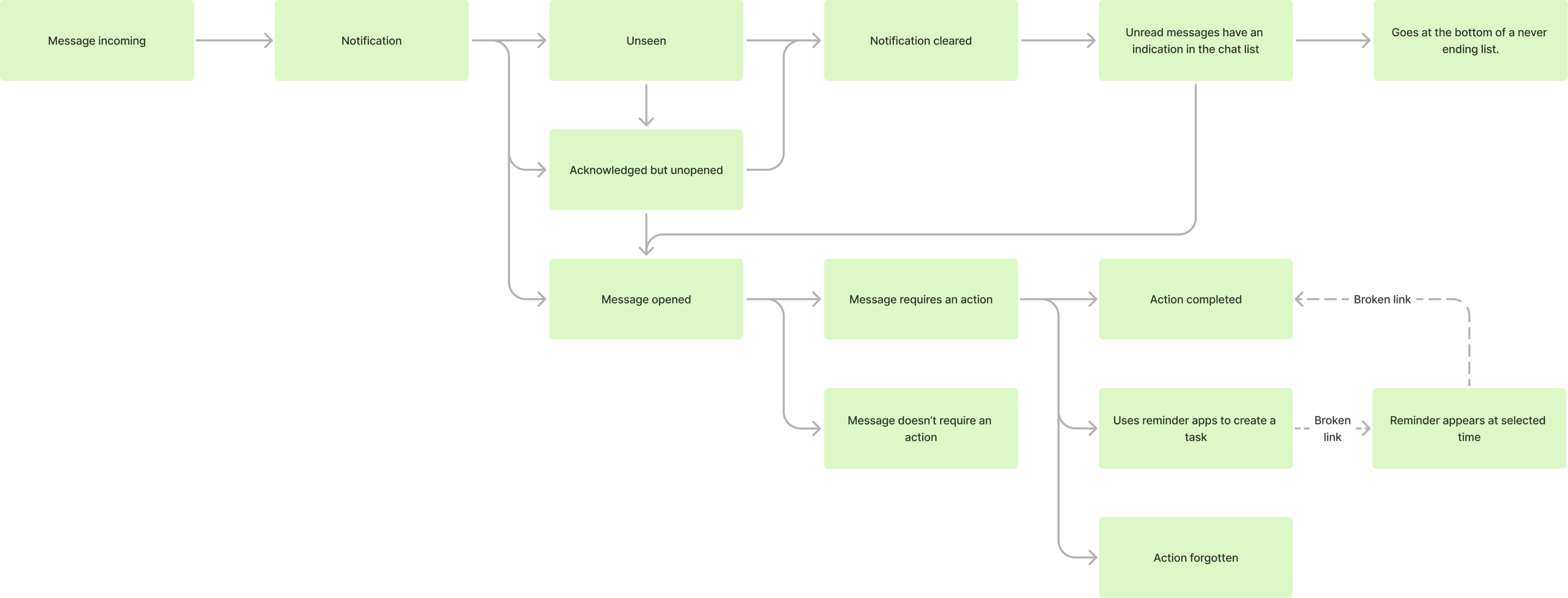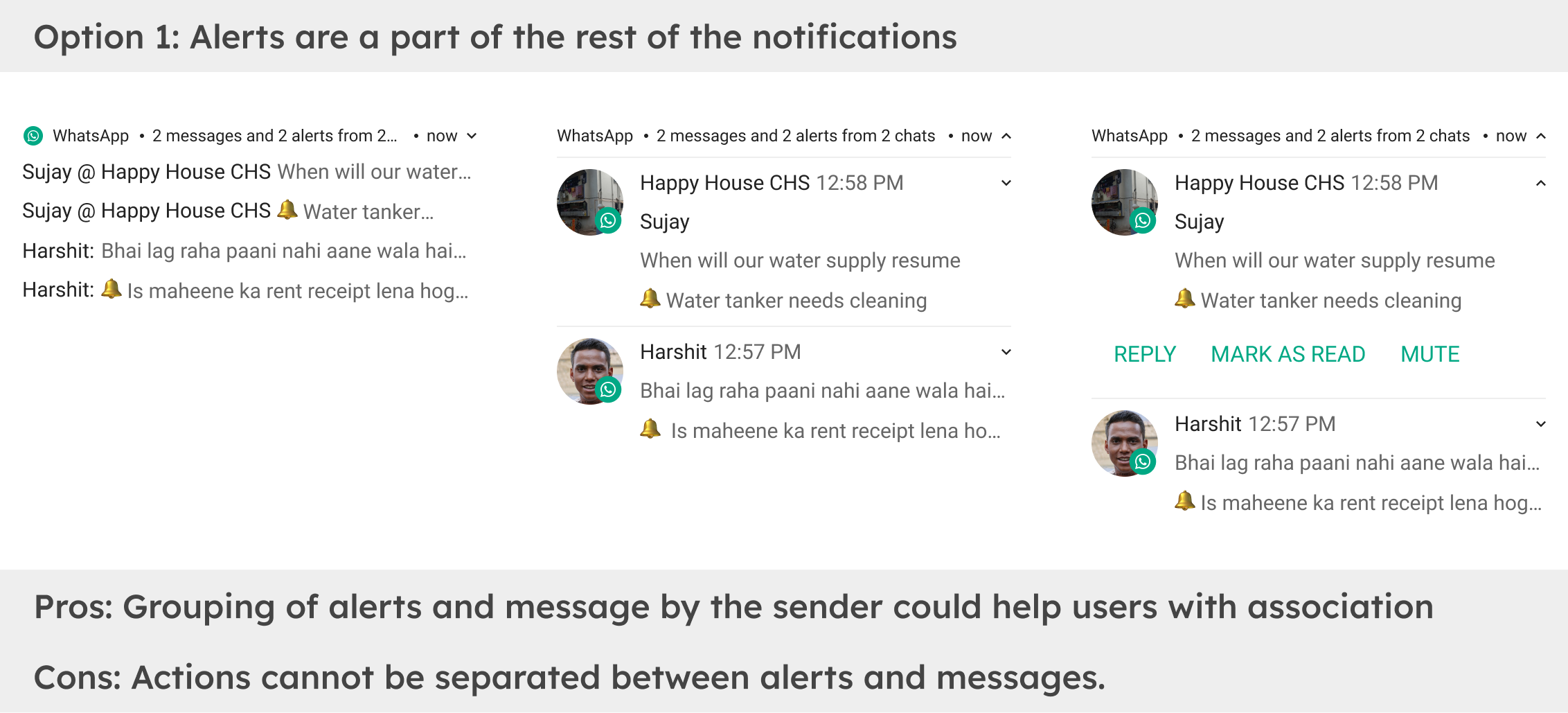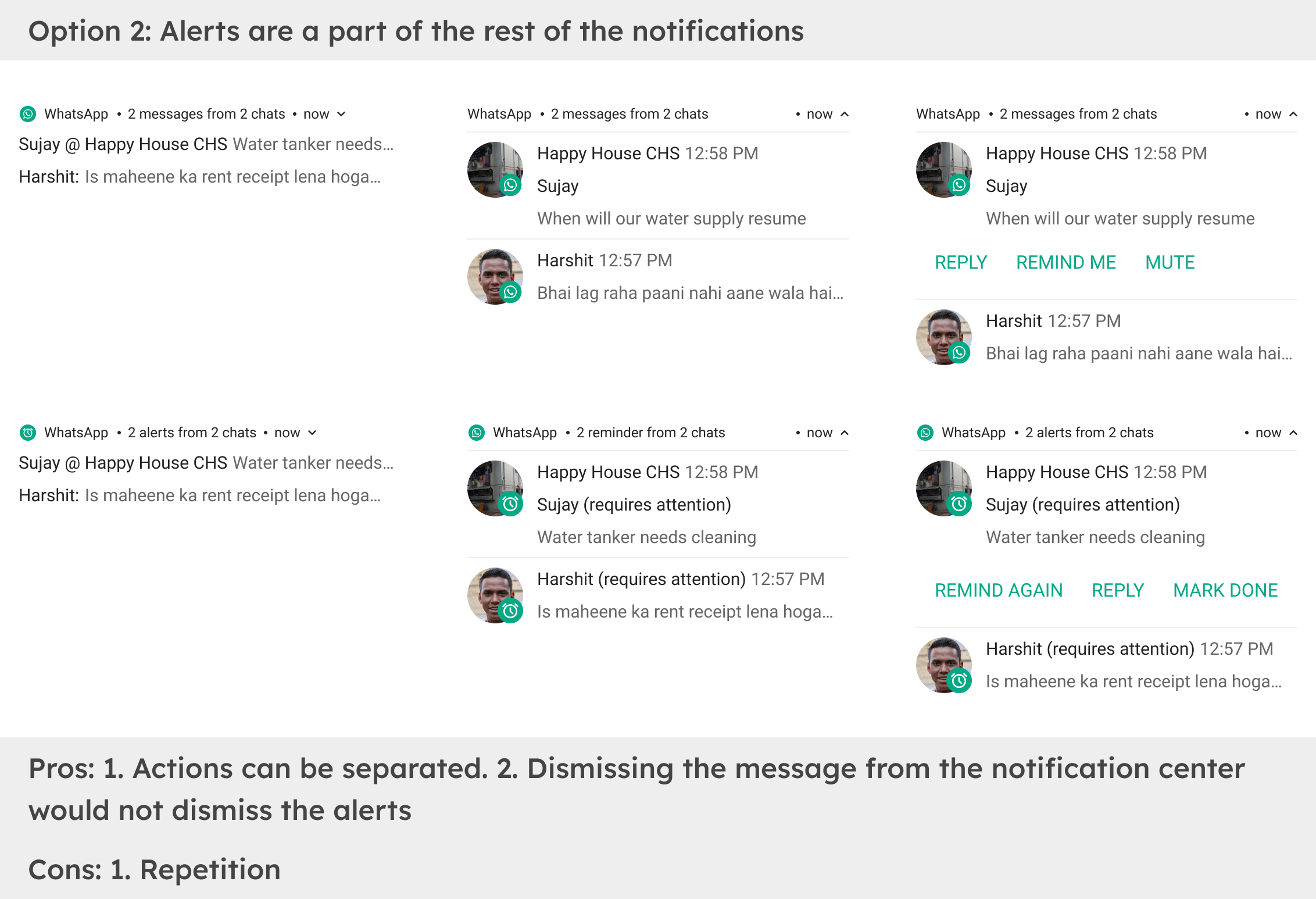



Introduction
Helping users remember things to do from WhatsApp messages in time with a conceptual solution.
WhatsApp is at the center of everyday communications: both personal and at times professional.
Communications oftentimes lead to actionable tasks. We ask our friends, family, and colleagues to share a file, help us with editing an image, review our work, get something from the market, or even watch an Instagram reel. And they do forget! (So do we 😉)
🎯
We get asked by friends, family, and colleagues to do some things that we often forgot. Not to mention the times when we forget to reply!
Hypothesis
WhatsApp is a bigger part of users lives than just a communications platform.
WhatsApp is one of the most frequently opened apps in India. An average user (Age group 26 - 35) opens their phone 47 times a day, out of which WhatsApp is opened 64% of the time. It is safe to say that opening WhatsApp is a part of a user's muscle memory, like opening TikTok, Instagram reels or YT Shorts.
WhatsApp is one of those apps that users open naturally as a part of their muscle memory.
Since 2017, WhatsApp has been adding features like stories, communities, and now payments (among other valuable features to enhance communication) to give more reasons to their users to keep opening their app.
WhatsApp announced a feature to Message Yourself in November 2022. For a power user, it is a place to store a lot of important notes, messages, files, etc. WhatsApp also lets users star important messages and let them access it either from individual chats or from a central repository that contains all the starred messages. Personally I do use this set of features to solve the problem of maintaining a list of to-do’s that not only comes from chat messages but also from the “real” life interactions.
Deep dive into the problem
The need to help users stay on top of tasks from WhatsApp messages starts with understanding how often actions slip through the cracks. Our research aimed to uncover these scenarios.
Objective of the research
Outcome
139 people were surveyed using this questionnaire:
Insights
| Age group | % of people that acknowledge that there are tasks from WhatsApp and those who frequently have tasks from WhatsApp | % of people that forget about tasks from WhatsApp and those who forget more frequently than others | % of people that are affected because their recipient forgot |
|---|---|---|---|
| 18-24 (35) | 100% and 80% (29) | 91% (32) and 40% (14) | 88% and 42% |
| 25-35 (64) | 100% and 55% (35) | 95% (61) and 25% (16) | 92% and 35% |
| 36-50 (30) | 100% and 60% (18) | 80% (24) and 17% (5) | 64% and 12% |
| 50+ (10) | 80% and 30% (3) | 90% (9) and 10% (1) | 20% and 20% |
| Overall | 99% and 61% (85) | 91% (126) and 26% (36) |
🎯
Forgetting tasks from WhatsApp is a common issue across all age groups, with 18-24-year-olds being the most frequent. Users often fail to recognize the number of actionable items emerging from chats, and there's no seamless link between WhatsApp conversations and reminder tools
Insights
Auditing of WhatsApp’s existing solutions
🎯
🎯
Problem statement: WhatsApp users need a way so that they do not forget to take actions on messages that they receive.
Solution
Customizable Reminders Empower WhatsApp Users to Stay on Top of Important Messages.
Ideation
User flows
Existing user flow

Updated user flow



USER STORIES AND DESIGNS
PROJECTED IMPACT & NEXT STEPS
Projecting potential outcomes and future directions: exploring user engagement, platform expansion, and integration possibilities
Expected outcome
Next steps